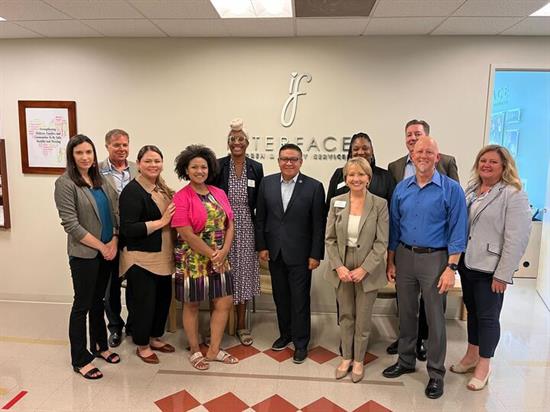Rep. Carbajal Seeks Independent Assessment of Successes, Potential Improvements of ‘211’ HotlineCarbajal asks Government Accountability Office to examine where public information dialing code could benefit from increased efficiencies, improved public awareness
Washington,
October 26, 2023
Congressman Salud Carbajal (CA-24) called on the Government Accountability Office (GAO), a nonpartisan government agency, to complete an independent assessment of the successes and potential improvements available for the nation’s 211 public information system and the services it provides to families across the United States. “In recent years, 211 systems have played an increasingly significant role in disaster response and recovery. Many 211 systems have formal agreements with local or state governments to serve as an official communication tool during times of disaster such as hurricanes, floods, and fires. In response to mass shootings, 211’s have been relied on as a central point of information in communities,” Rep. Carbajal wrote in his request to GAO. “Although the 211 system is a free and confidential service provided by non-profit organizations that may help people find the local resources they need, there can be benefits to evaluating its effectiveness.” Rep. Carbajal asked the GAO to share any data on 211’s current usages and services provided to callers across all 50 states, as well as what training and tools are provided to the nonprofits that operate the 211 call centers. The Congressman’s letter to GAO also asks for their help in identifying potential improvements, efficiencies, and public awareness pushes that could be utilized to connect more families with the service and the valuable information it can offer. The Federal Communications Commission (FCC) designated the 211 dialing code for social services and information referrals in the year 2000. The full letter to the GAO’s Comptroller General can be found here and below: Dear Mr. Dodaro, In 2000, the Federal Communications Commission (FCC) designated “211” as the 3-digit dialing code for information and referrals to social services and other assistance. The service is available to approximately 99 percent of the U.S. population and covers all 50 states, the District of Columbia, and Puerto Rico. More than 200 local organizations provide this service to their communities. By simply dialing 211, those in need can access information and obtain referrals to basic needs resources such as: housing, utility, food, and employment assistance; mental health supports, and suicide and crisis interventions. This system works similarly to 911, in that calls to211 are routed by the local telephone company to a local or regional call center. The 211 center’s referral specialists receive requests from callers, access curated databases of community resources available from private and public health and human service agencies, match the callers’ needs to available resources, and link or refer them directly to an agency or organization that can help. In recent years, 211 systems have played an increasingly significant role in disaster response and recovery. Many 211 systems have formal agreements with local or state governments to serve as an official communication tool during times of disaster such as hurricanes, floods, and fires. In response to mass shootings, 211’s have been relied on as a central point of information in communities, relieving strain on 911 systems for those with non-emergency needs for information. And during the pandemic, 31 governors leveraged 211 as a critical piece of their state response to ensure their constituents had access to vetted and accurate information including testing and vaccination sites. Although the 211 system is a free and confidential service provided by non-profit organizations that may help people find the local resources they need, there can be benefits to evaluating its effectiveness. Therefore, I would like GAO to examine the following issues: · What data, if any, exists on how often the 211 system is being used and for what types of services? How often is the 211 system being used and for what services? · Is there an opportunity to expand 211’s services to include a closed-loop referral process to track services provided to 211 customers by referral agencies? · What benefits do 211 systems and the resources they provide have on the community, and what are the short and long-term effects for individuals and families that utilize this information? · To what extent do 211 call centers have the training, tools, databases, etc. to provide meaningful information to those in need? How do 211 Call Centers train and support all Representatives? · What databases are used to house information and map available services? · What challenges do 211 call centers face in serving their communities? · Is there an opportunity for increased funding to support infrastructure to expand the delivery of 211 services? · How does 211 intersect with emergency and disaster response systems and what opportunities exist for increased awareness of 211 during disasters to reduce call surge to 911? · What more, if anything, could be done to increase public awareness and equitable access to the 211 system? Thank you for your attention to this important matter. ### |
- Home
- About
- Services
- Help with a Federal Agency
- Congressional Art Competition
- Congressional App Challenge
- Congressional Commendations
- Flag Request
- FY2026 Appropriations Requests
- FY2026 NDAA and Defense Appropriations Requests
- FY26 Community Projects
- Know your Immigration Rights
- Grants
- Internships
- Military Academy Nominations
- Tour Requests
- Issues
- Media
- Contact




